 Facebook
Facebook
 X
X
 Instagram
Instagram
 TikTok
TikTok
 Youtube
Youtube
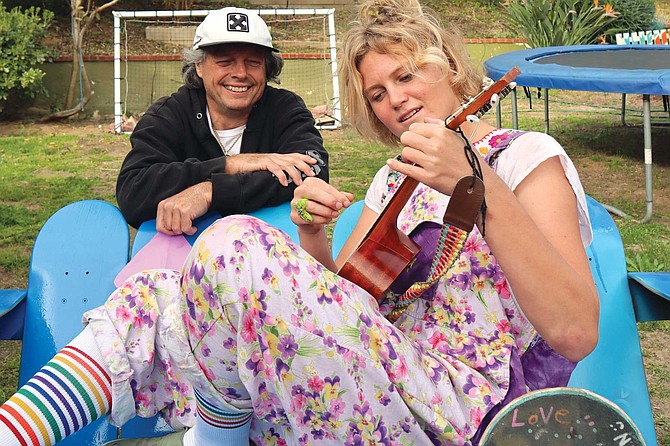
On the second day of the second month of the twenty-second year of the twenty-first century, a skateboarding legend and a future skateboarding legend discussed their chosen sport within earshot of a writer old enough to have nailed his metal roller skates onto a two-by-four and called it a skateboard. The conversation ran to surfing, physics, metaphysics, joy, music, and the thrill of victory, but never mentioned the agony of defeat. The hands-on the clock touched 2:22 without the sky opening or falling. But it was still darn cool to spend that moments, and those that surrounded it, with Tony Magnusson and his wunderkind protégé, Bryce Wettstein.
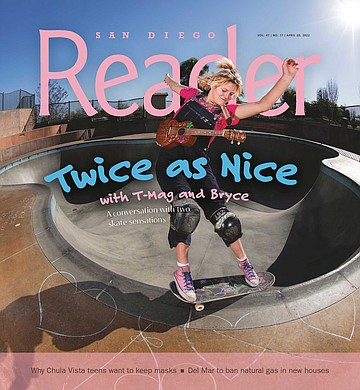
Eighteen-year-old Bryce Ava Wettstein lives in Encinitas with her family in a home that could be featured in a remake of a 1950s TV show. The structure is modern-looking enough, but its interior somehow offers the effect of visiting a living time capsule, a place untouched by the chaos of the outside world. Then you get to the backyard, where an archery range and a heavy bag can be spotted amid the plethora of well-used surfboards and skateboards that are scattered about. The centerpiece here is the “Iguana Bowl, a large, even majestic wood-floored skate pool named after the Wettstein family’s recently departed pet and fashioned into an ideal practice spot for high-level skateboarding.
Wettstein cares about many things: family, friends, and school, like anyone; but not like everyone, sewing, surfing, volleyball, painting, writing, playing and composing music; and like maybe not so many others, mentoring, video production, and an upcoming skate movie. Oh, and skating, zipping around that waterless pool like a Tesla-powered Millennium Falcon. And she’s young. So it’s both forgivable and understandable that she’s a little late. Rushing into the house, she breathlessly greets every family member by name, apologizes to Tony and me, hugs Tony, warmly shakes my hand, and says, “Hi, I’m Bryce.” The introduction is polite but unnecessary; like a lot of people, I know who she is, because I saw her skate at the 2020 Olympics. She is both the 2019 U.S. National Woman’s Park Riding Champion and the highest-placing American woman in the park riding division of the 2020 Olympics, where she finished sixth. Perhaps more impressive than her skating that day, however, were her heartfelt congratulations to all the competitors — even (and perhaps especially) those who kept her off the podium. This was skateboarding’s first appearance at the Olympics, and it saw what was likely another Olympic first: a finalist — Wettstein — strumming her seemingly omnipresent ukulele while being introduced to the world.
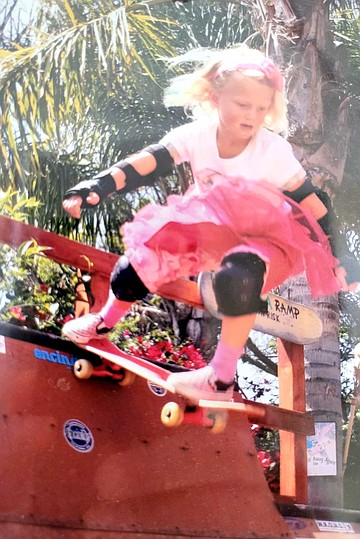
To the unobservant, Wettstein might appear to be some kind of retro hippie, rolling her way toward bliss consciousness. The colorful, embroidered clothing, kind demeanor, and the frequent use of “beautiful” would no doubt contribute to this forgivable assumption. But she is no backward-looking imitation; rather, a curious pilgrim, harvesting wisdom and style from past and present alike while, hopefully, influencing our world’s uncertain future. She is also an honor student, immersed in a medieval university curriculum involving the mathematical arts of arithmetic, geometry, astronomy, and music called the Quadrivium. Small surprise then, that she is something of a backyard philosopher, given to observations like, “Skateboarding gives life, vibrance, and magic to everything. When you get caught up in the moment there’s no future or past. Sometimes, beforehand, you can think too hard about not thinking. Then you must realize what’s happening so you can adjust. It’s like a Rubik’s Cube. At times you’ll try something, and it’s just not right. When it is right, it opens new areas like in the sky where you have all the air you need. In competition, there are times when you’re the most conscious you’ve ever been. Everything is heightened, like it’s the true version of what’s really in front of you. It’s so beautiful, but you sometimes have to do a deep dive into that consciousness and then kind of move away from it.”
Maybe a slightly larger surprise that she is a musician, given to songs that reflect her sense of childlike wonder and the unlikely pairing of her two favorite subjects: fairy tales and science. She sang her song “Extraordinary” for me; it has played on a brain loop ever since. A sample verse:
There can be a space between what you hold so close
Close your so outgoing eyes and find what you love most
When you have something that you think is nothing
Nothing never comes from something
You are everything in your story and that’s what makes you...
Extraordinary
When we speak, Bryce listens attentively, and answers thoughtfully, making observations on subjects as seemingly diverse as skate tricks and the nature of reality. She has witnessed dreams come true and wondered if they were not merely that, dreams. When asked about the Olympics, her voice cracks joyfully as she responds, “Was that really me?” before adding, “The Olympics were a dream come true, but are a very small part of skateboarding that does not define either me or skateboarding. I love competing, but to me the best thing about contests is getting to hang out with all my international skate friends. The Olympics came and went, but skateboarding will go on forever.” If she wasn’t so busy, I would suggest she become an international ambassador of niceness.
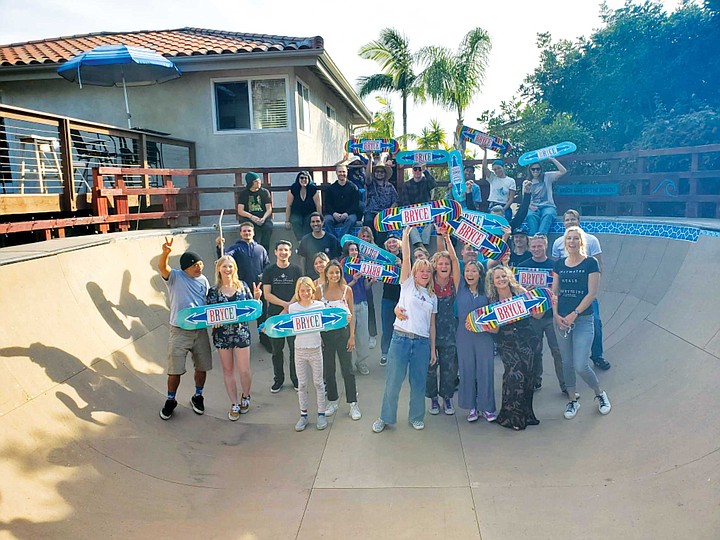
Watching footage of Bryce rhythmically carving her backyard pool makes me wonder if she hears music in her head while skating. Her answer: “Somebody once made a song just out of the sounds of skateboarding. It shows that skateboarding itself is like music. A move like an ‘invert’ is like hip-hop and a ‘tailslide’ is kind of violent. Skateboarding is hypnotic, and I can drift away, like being in an ocean current.” I doubt it’s intentional that her song “Never Ending Daydream,” which includes the lyric, “The glitter in her eyes made the shadows run; pretty soon the dream was upon everyone” seems autobiographical, but it does all the same.
Her precociousness makes sense when you consider her household. Skateboarding, which once had an outlaw image dominated by rowdy teenage males, is now the domain of the entire family, pursued at places like the Encinitas YMCA, where Wettstein’s father first took his five-year-old daughter to skate. Today, Mother Donna is a real estate agent who manages Bryce’s career. Like her daughter, she surfs and skates, and she groks her oldest’s energy. “Music is so entangled in her spirit,” she says. “It’s her skate therapy. Everyone tells me she should have her own Mr. Rogers-type show for little kids. My little firefly, a snap of light.” Her father Max is an airline captain, but a surfer and skater as well, as is her 10-year-old sister Summer. Surely some smart producer has a reality show planned. (Actually, I hope not; it would mess with the mojo.)
As a skater, Wettstein realizes she is riding on the shoulders of giants. She appreciates the sacrifices made by pioneering skaters like the one at her table: Tony Magnusson. Magnusson, known as T-Mag, is a five-time winner of the “Legends of Skateboard World Championships” held in Germany. He placed fifth in the Legends division of the 2009 X-Games. He co-founded H-Street Skateboards and Osiris Skate Shoes, produced numerous popular skate films, and is a major contributor to the creation of a still-popular skate trick called the “Stalefish.” He is perhaps the oldest skateboarder to ever ride Danny Way’s Mega Ramp. All because long ago, without support from anyone, he left college and homeland to pursue what was then considered a kid’s pastime. It was 1980 when he moved from Sweden to Southern California to live in the comfort of a 1972 Pontiac Catalina. Looking back, he recalls, “I figured out that the 90 days we had on our visas. Divided by the few hundred dollars we brought with us meant five dollars per day for all expenses: gas, food, entertainment, etc.” Why here? Why indeed. Most skateboarding historians (yes, there are such beings) believe the skateboard was invented in La Jolla by surfboard builder Peter Parkin in the late 1940s. By all accounts, these steel-wheeled death traps were basically retooled roller skates mounted onto finely crafted slabs of hardwood. When kids nationwide started copying Parkin’s invention, most skipped a step or two and simply nailed their old roller skates onto foot-long two-by-fours. Their parents lamented the emergency room bills. Clay roller-derby wheels made skateboarding easier and safer, but a trip to the ER was still just an unseen pebble away.

Skateboarding began as a flat-earth pastime, and might have forever remained surfing’s awkward love child if a young skateboarder named Frank Nasworthy had not latched onto some experimental urethane roller rink wheels and bolted them to a skateboard in the mid-1970s. Urethane was the catalyst needed for Dogtown surf-rats-turned-pool-rats Tony Alva, Jay Adams, and Stacy Peralta to launch out of the deep end of drained swimming pools and take flight. The substance broke skateboarding free from the “sidewalk surfing” anchor chain, and, since most skateboarders were also surfers at the time, introduced previously unimagined aerial skate moves into the ocean. Skateboarding thus repaid surfing for the loan of its original tricks by opening the sky to the surfing world.
Around the time Dogtown was doing its thing, San Diego’s Bruce Logan was bombing La Costa’s Black Hill at 40 miles per hour. Bruce also invented many of the freestyle tricks of that era, and, with the possible exception of Ty “Mister Incredible” Page, was usually the best skater on that or any stretch of asphalt. San Diego went on to blitz slalom events where Bruce’s older brother Brian Logan, Dennis Shufeldt, Henry Hester, and Bobby Piercy occupied the fast lane. Bruce’s younger siblings — sister Robin and Brother Brad — also showed well in both freestyle and vertical competition, alongside skaters such as Denis Schufeldt, Dennis Martinez, Laura Thornhill, Steve Cathey, Gregg Weaver, Billy Ruff, Ellen O’Neill, Doug “Pineapple” Saladino, and Kim Cespedes.
About a decade after the smoke cleared from the urethane revolution, a new generation reinvented skateboarding once again: people like Steve Caballero, Christian Hosoi, Mike McGill, Mark Gonzalez, and Tony Hawk. And that’s when T-Mag arrived on the scene. He was already among the best skateboarders in Sweden, but he had his eye fixed on every move made at California’s skate parks.
He’s still watching, and he likes what he sees. “I find it noteworthy,” he observes, “that all three girl skaters on the U.S. Olympic Park Team — Bryce Wettstein, Brighton Zeuner, and Jordan Barret — live in San Diego. San Diego will continue to be home to skateboarders from all around the world, and with the recent inclusion in the Olympics, we can expect San Diego skateboarding to continue to be rather prolific and influential.”
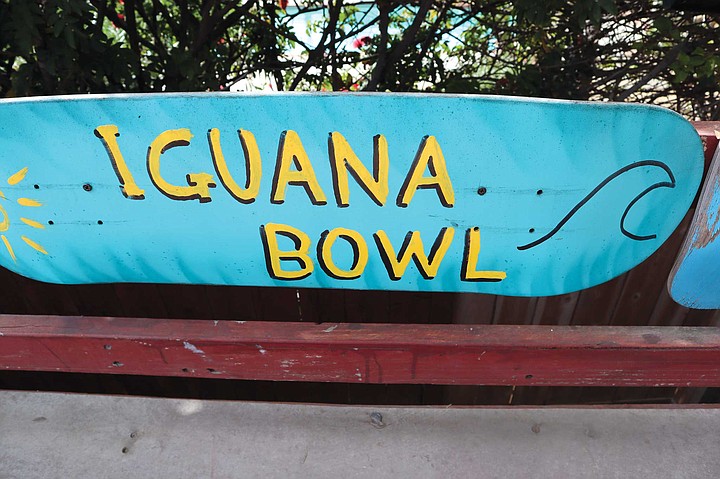
Happily, San Diego seems to know when it has a good thing going on — this time, anyway. To atone for the sins of destroying the Del Mar Skate Ranch, the Carlsbad Skate Park, and some 200 other privately owned skateboarding facilities built in the ‘70s and demolished in the ‘80s, cities in San Diego County have built better, safer, and free skate parks for their skate-izens. Cardiff Skate Park is one such place, and that’s where you will often find Wettstein and other pros of her era riding alongside ‘80s and ‘90s legends like Caballero, Hosoi, and Magnusson. There, skaters in their teens and pre-teens can work to perfect tricks like the 40-year-old “Half Cab,” while Caballero, the 57-year-old inventor of that move, looks on appreciatively. Or perhaps they will attempt a “McTwist,” aka the “540,” which was invented only a few years after the Half Cab and also remains one of skateboarding’s basic tricks. One of the signature moves of the ‘80s, the McTwist was presented to the world by Mike McGill, whose skate shop stands just blocks from the beach in Encinitas.
A new generation is always rising up, and Wettstein is a fascinating part of this one. She was recently featured in a Thrasher Magazine video. That might seem surprising, given that Thrasher essentially was built on a body-slamming punk rock ethic. That was the sound of youth staking out its territory. But now, with loud and edgy having served as the norm in skateboarding for years, maybe a nice kid with a parasol and a whispering voice, singing along to her own acoustic accompaniment, embodies the new anti-establishment vibe. Perhaps Bryce Wettstein will one day rank among the most influential skateboarders of all time. She was certainly influential to me. Who else could cause this septuagenarian to skateboard cautiously down his retirement community sidewalk, thanking God for urethane while humming “Extraordinary”?


On the second day of the second month of the twenty-second year of the twenty-first century, a skateboarding legend and a future skateboarding legend discussed their chosen sport within earshot of a writer old enough to have nailed his metal roller skates onto a two-by-four and called it a skateboard. The conversation ran to surfing, physics, metaphysics, joy, music, and the thrill of victory, but never mentioned the agony of defeat. The hands-on the clock touched 2:22 without the sky opening or falling. But it was still darn cool to spend that moments, and those that surrounded it, with Tony Magnusson and his wunderkind protégé, Bryce Wettstein.

Eighteen-year-old Bryce Ava Wettstein lives in Encinitas with her family in a home that could be featured in a remake of a 1950s TV show. The structure is modern-looking enough, but its interior somehow offers the effect of visiting a living time capsule, a place untouched by the chaos of the outside world. Then you get to the backyard, where an archery range and a heavy bag can be spotted amid the plethora of well-used surfboards and skateboards that are scattered about. The centerpiece here is the “Iguana Bowl, a large, even majestic wood-floored skate pool named after the Wettstein family’s recently departed pet and fashioned into an ideal practice spot for high-level skateboarding.
Wettstein cares about many things: family, friends, and school, like anyone; but not like everyone, sewing, surfing, volleyball, painting, writing, playing and composing music; and like maybe not so many others, mentoring, video production, and an upcoming skate movie. Oh, and skating, zipping around that waterless pool like a Tesla-powered Millennium Falcon. And she’s young. So it’s both forgivable and understandable that she’s a little late. Rushing into the house, she breathlessly greets every family member by name, apologizes to Tony and me, hugs Tony, warmly shakes my hand, and says, “Hi, I’m Bryce.” The introduction is polite but unnecessary; like a lot of people, I know who she is, because I saw her skate at the 2020 Olympics. She is both the 2019 U.S. National Woman’s Park Riding Champion and the highest-placing American woman in the park riding division of the 2020 Olympics, where she finished sixth. Perhaps more impressive than her skating that day, however, were her heartfelt congratulations to all the competitors — even (and perhaps especially) those who kept her off the podium. This was skateboarding’s first appearance at the Olympics, and it saw what was likely another Olympic first: a finalist — Wettstein — strumming her seemingly omnipresent ukulele while being introduced to the world.

To the unobservant, Wettstein might appear to be some kind of retro hippie, rolling her way toward bliss consciousness. The colorful, embroidered clothing, kind demeanor, and the frequent use of “beautiful” would no doubt contribute to this forgivable assumption. But she is no backward-looking imitation; rather, a curious pilgrim, harvesting wisdom and style from past and present alike while, hopefully, influencing our world’s uncertain future. She is also an honor student, immersed in a medieval university curriculum involving the mathematical arts of arithmetic, geometry, astronomy, and music called the Quadrivium. Small surprise then, that she is something of a backyard philosopher, given to observations like, “Skateboarding gives life, vibrance, and magic to everything. When you get caught up in the moment there’s no future or past. Sometimes, beforehand, you can think too hard about not thinking. Then you must realize what’s happening so you can adjust. It’s like a Rubik’s Cube. At times you’ll try something, and it’s just not right. When it is right, it opens new areas like in the sky where you have all the air you need. In competition, there are times when you’re the most conscious you’ve ever been. Everything is heightened, like it’s the true version of what’s really in front of you. It’s so beautiful, but you sometimes have to do a deep dive into that consciousness and then kind of move away from it.”
Maybe a slightly larger surprise that she is a musician, given to songs that reflect her sense of childlike wonder and the unlikely pairing of her two favorite subjects: fairy tales and science. She sang her song “Extraordinary” for me; it has played on a brain loop ever since. A sample verse:
There can be a space between what you hold so close
Close your so outgoing eyes and find what you love most
When you have something that you think is nothing
Nothing never comes from something
You are everything in your story and that’s what makes you...
Extraordinary
When we speak, Bryce listens attentively, and answers thoughtfully, making observations on subjects as seemingly diverse as skate tricks and the nature of reality. She has witnessed dreams come true and wondered if they were not merely that, dreams. When asked about the Olympics, her voice cracks joyfully as she responds, “Was that really me?” before adding, “The Olympics were a dream come true, but are a very small part of skateboarding that does not define either me or skateboarding. I love competing, but to me the best thing about contests is getting to hang out with all my international skate friends. The Olympics came and went, but skateboarding will go on forever.” If she wasn’t so busy, I would suggest she become an international ambassador of niceness.

Watching footage of Bryce rhythmically carving her backyard pool makes me wonder if she hears music in her head while skating. Her answer: “Somebody once made a song just out of the sounds of skateboarding. It shows that skateboarding itself is like music. A move like an ‘invert’ is like hip-hop and a ‘tailslide’ is kind of violent. Skateboarding is hypnotic, and I can drift away, like being in an ocean current.” I doubt it’s intentional that her song “Never Ending Daydream,” which includes the lyric, “The glitter in her eyes made the shadows run; pretty soon the dream was upon everyone” seems autobiographical, but it does all the same.
Her precociousness makes sense when you consider her household. Skateboarding, which once had an outlaw image dominated by rowdy teenage males, is now the domain of the entire family, pursued at places like the Encinitas YMCA, where Wettstein’s father first took his five-year-old daughter to skate. Today, Mother Donna is a real estate agent who manages Bryce’s career. Like her daughter, she surfs and skates, and she groks her oldest’s energy. “Music is so entangled in her spirit,” she says. “It’s her skate therapy. Everyone tells me she should have her own Mr. Rogers-type show for little kids. My little firefly, a snap of light.” Her father Max is an airline captain, but a surfer and skater as well, as is her 10-year-old sister Summer. Surely some smart producer has a reality show planned. (Actually, I hope not; it would mess with the mojo.)
As a skater, Wettstein realizes she is riding on the shoulders of giants. She appreciates the sacrifices made by pioneering skaters like the one at her table: Tony Magnusson. Magnusson, known as T-Mag, is a five-time winner of the “Legends of Skateboard World Championships” held in Germany. He placed fifth in the Legends division of the 2009 X-Games. He co-founded H-Street Skateboards and Osiris Skate Shoes, produced numerous popular skate films, and is a major contributor to the creation of a still-popular skate trick called the “Stalefish.” He is perhaps the oldest skateboarder to ever ride Danny Way’s Mega Ramp. All because long ago, without support from anyone, he left college and homeland to pursue what was then considered a kid’s pastime. It was 1980 when he moved from Sweden to Southern California to live in the comfort of a 1972 Pontiac Catalina. Looking back, he recalls, “I figured out that the 90 days we had on our visas. Divided by the few hundred dollars we brought with us meant five dollars per day for all expenses: gas, food, entertainment, etc.” Why here? Why indeed. Most skateboarding historians (yes, there are such beings) believe the skateboard was invented in La Jolla by surfboard builder Peter Parkin in the late 1940s. By all accounts, these steel-wheeled death traps were basically retooled roller skates mounted onto finely crafted slabs of hardwood. When kids nationwide started copying Parkin’s invention, most skipped a step or two and simply nailed their old roller skates onto foot-long two-by-fours. Their parents lamented the emergency room bills. Clay roller-derby wheels made skateboarding easier and safer, but a trip to the ER was still just an unseen pebble away.

Skateboarding began as a flat-earth pastime, and might have forever remained surfing’s awkward love child if a young skateboarder named Frank Nasworthy had not latched onto some experimental urethane roller rink wheels and bolted them to a skateboard in the mid-1970s. Urethane was the catalyst needed for Dogtown surf-rats-turned-pool-rats Tony Alva, Jay Adams, and Stacy Peralta to launch out of the deep end of drained swimming pools and take flight. The substance broke skateboarding free from the “sidewalk surfing” anchor chain, and, since most skateboarders were also surfers at the time, introduced previously unimagined aerial skate moves into the ocean. Skateboarding thus repaid surfing for the loan of its original tricks by opening the sky to the surfing world.
Around the time Dogtown was doing its thing, San Diego’s Bruce Logan was bombing La Costa’s Black Hill at 40 miles per hour. Bruce also invented many of the freestyle tricks of that era, and, with the possible exception of Ty “Mister Incredible” Page, was usually the best skater on that or any stretch of asphalt. San Diego went on to blitz slalom events where Bruce’s older brother Brian Logan, Dennis Shufeldt, Henry Hester, and Bobby Piercy occupied the fast lane. Bruce’s younger siblings — sister Robin and Brother Brad — also showed well in both freestyle and vertical competition, alongside skaters such as Denis Schufeldt, Dennis Martinez, Laura Thornhill, Steve Cathey, Gregg Weaver, Billy Ruff, Ellen O’Neill, Doug “Pineapple” Saladino, and Kim Cespedes.
About a decade after the smoke cleared from the urethane revolution, a new generation reinvented skateboarding once again: people like Steve Caballero, Christian Hosoi, Mike McGill, Mark Gonzalez, and Tony Hawk. And that’s when T-Mag arrived on the scene. He was already among the best skateboarders in Sweden, but he had his eye fixed on every move made at California’s skate parks.
He’s still watching, and he likes what he sees. “I find it noteworthy,” he observes, “that all three girl skaters on the U.S. Olympic Park Team — Bryce Wettstein, Brighton Zeuner, and Jordan Barret — live in San Diego. San Diego will continue to be home to skateboarders from all around the world, and with the recent inclusion in the Olympics, we can expect San Diego skateboarding to continue to be rather prolific and influential.”

Happily, San Diego seems to know when it has a good thing going on — this time, anyway. To atone for the sins of destroying the Del Mar Skate Ranch, the Carlsbad Skate Park, and some 200 other privately owned skateboarding facilities built in the ‘70s and demolished in the ‘80s, cities in San Diego County have built better, safer, and free skate parks for their skate-izens. Cardiff Skate Park is one such place, and that’s where you will often find Wettstein and other pros of her era riding alongside ‘80s and ‘90s legends like Caballero, Hosoi, and Magnusson. There, skaters in their teens and pre-teens can work to perfect tricks like the 40-year-old “Half Cab,” while Caballero, the 57-year-old inventor of that move, looks on appreciatively. Or perhaps they will attempt a “McTwist,” aka the “540,” which was invented only a few years after the Half Cab and also remains one of skateboarding’s basic tricks. One of the signature moves of the ‘80s, the McTwist was presented to the world by Mike McGill, whose skate shop stands just blocks from the beach in Encinitas.
A new generation is always rising up, and Wettstein is a fascinating part of this one. She was recently featured in a Thrasher Magazine video. That might seem surprising, given that Thrasher essentially was built on a body-slamming punk rock ethic. That was the sound of youth staking out its territory. But now, with loud and edgy having served as the norm in skateboarding for years, maybe a nice kid with a parasol and a whispering voice, singing along to her own acoustic accompaniment, embodies the new anti-establishment vibe. Perhaps Bryce Wettstein will one day rank among the most influential skateboarders of all time. She was certainly influential to me. Who else could cause this septuagenarian to skateboard cautiously down his retirement community sidewalk, thanking God for urethane while humming “Extraordinary”?
Comments